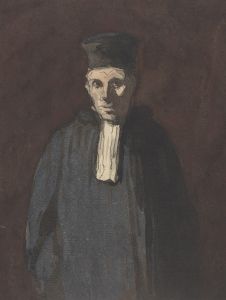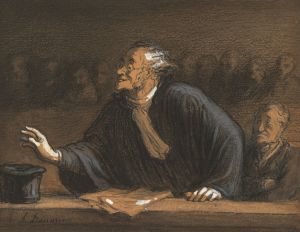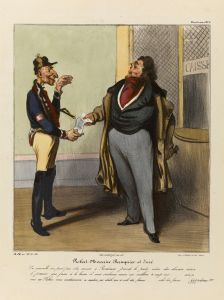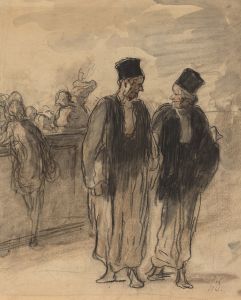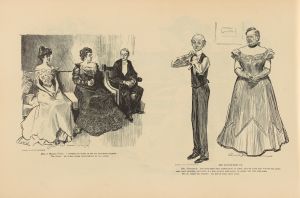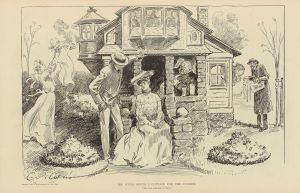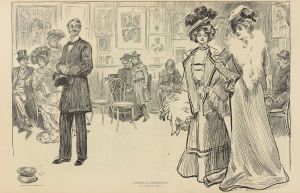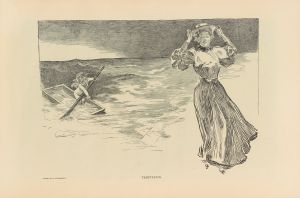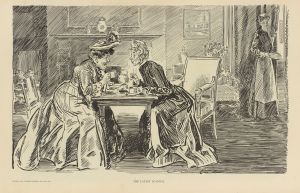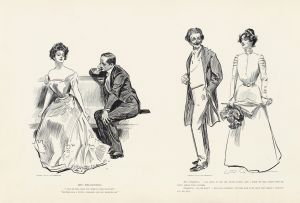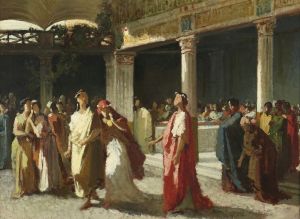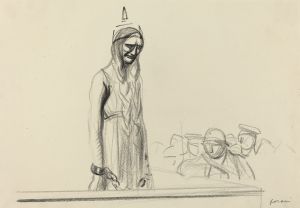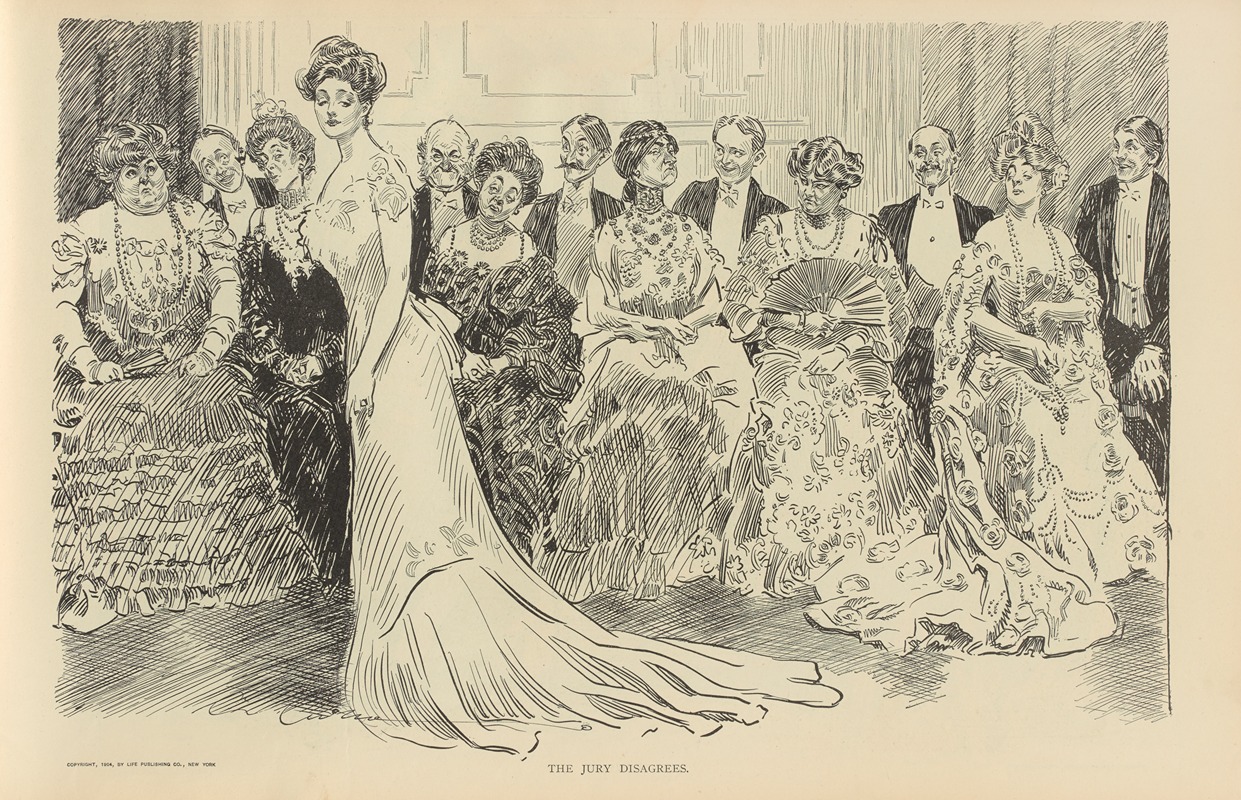
The jury disagrees
A hand-painted replica of Charles Dana Gibson’s masterpiece The jury disagrees, meticulously crafted by professional artists to capture the true essence of the original. Each piece is created with museum-quality canvas and rare mineral pigments, carefully painted by experienced artists with delicate brushstrokes and rich, layered colors to perfectly recreate the texture of the original artwork. Unlike machine-printed reproductions, this hand-painted version brings the painting to life, infused with the artist’s emotions and skill in every stroke. Whether for personal collection or home decoration, it instantly elevates the artistic atmosphere of any space.
Charles Dana Gibson was a prominent American illustrator, best known for his creation of the "Gibson Girl," an iconic representation of the independent and fashionable American woman of the late 19th and early 20th centuries. One of his notable works is the illustration titled "The Jury Disagrees." This piece is a fine example of Gibson's keen eye for social commentary and his ability to capture the nuances of human expression and societal norms through his art.
"The Jury Disagrees" was created during a time when Gibson was at the height of his career, contributing regularly to popular magazines such as Life, Harper's Weekly, and Scribner's. His illustrations were widely recognized for their wit, humor, and insightful observations of contemporary society. In "The Jury Disagrees," Gibson employs his characteristic pen-and-ink technique to depict a scene that is both humorous and telling of the era's gender dynamics.
The illustration portrays a jury room filled with men who appear to be in a heated debate, with one notable exception: a single woman, the Gibson Girl, sits calmly and confidently among them. Her presence in the jury room is significant, as it reflects the changing roles of women in society during the early 20th century. The men around her are depicted with exaggerated expressions of confusion, frustration, and disagreement, highlighting the contrast between their disarray and her composed demeanor.
Gibson's work often explored themes of gender and social roles, and "The Jury Disagrees" is no exception. The illustration subtly critiques the male-dominated society of the time by placing a woman in a position of influence and authority, suggesting that her presence is a source of disruption to the status quo. This piece, like many of Gibson's works, uses humor and satire to address serious social issues, making it both entertaining and thought-provoking.
The Gibson Girl, as depicted in this illustration, embodies the ideals of beauty, independence, and intelligence. She is a symbol of the New Woman, a feminist ideal that emerged in the late 19th century, advocating for greater rights and opportunities for women. Through "The Jury Disagrees," Gibson not only entertains his audience but also encourages them to reflect on the evolving role of women in society.
Charles Dana Gibson's illustrations, including "The Jury Disagrees," played a significant role in shaping public perceptions of gender and social norms during his time. His ability to capture the spirit of the age with humor and insight has left a lasting impact on American art and culture. Today, his works continue to be celebrated for their artistic merit and their contribution to the dialogue on gender equality and social change.





